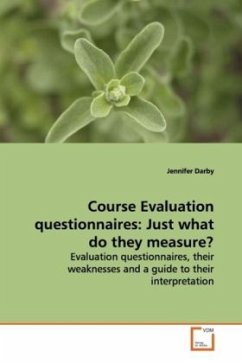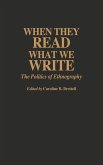Pencil and paper questionnaires are commonly used by
Universities, Colleges and other organisations to
evaluate courses and training programmes. They are
also used more widely to monitor staff performance
by many commercial organisations such as hotels. The
author exposes many of the weaknesses of these
questionnaires. and interpretations made from them.
It was found, for example, that open ended
evaluations tended to be answered in a socially
desirable manner. Rarely are individuals criticised
for their poor performance but rather the quality of
facilities tends to be blamed for any
dissapointment. This can lead to resources being
directed towards addressing the wrong problem.
Activity measure evaluations were found to relate
more closely to the effort involved in the task than
the merits of a particular activity. Structured
rating scales were subject to a ''halo effect'' and
individuals tended to answer using the favourable
end of scales, regardless of their real feelings.
Ways of improving the validity of these techniques
for monitoring performance are discussed. This
should be of interest to anyone using evaluation
questionnaires.
Universities, Colleges and other organisations to
evaluate courses and training programmes. They are
also used more widely to monitor staff performance
by many commercial organisations such as hotels. The
author exposes many of the weaknesses of these
questionnaires. and interpretations made from them.
It was found, for example, that open ended
evaluations tended to be answered in a socially
desirable manner. Rarely are individuals criticised
for their poor performance but rather the quality of
facilities tends to be blamed for any
dissapointment. This can lead to resources being
directed towards addressing the wrong problem.
Activity measure evaluations were found to relate
more closely to the effort involved in the task than
the merits of a particular activity. Structured
rating scales were subject to a ''halo effect'' and
individuals tended to answer using the favourable
end of scales, regardless of their real feelings.
Ways of improving the validity of these techniques
for monitoring performance are discussed. This
should be of interest to anyone using evaluation
questionnaires.








